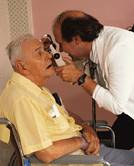An old report, the core concept of Connected Living was excellent and predictive. Thirteen years ago, AARP sponsored research that posed questions about technology’s future role in connecting older adults with families, resources and each other. With input from 30 industry experts, the research attempted to determine how technology could better serve older adults moving forward. The result was a 2011 report called Connected Living for Social Aging: Designing Technology for All. You won’t find it on AARP’s website – it’s too old. But it is very interesting, especially given that year’s low technology adoption and extremely limited use among older adults compared to today. The report accurately predicted the major role technology would take in their lives as they aged, though experts were not exactly sure how.
Baby boomers then were aged 46-65 – today they are aged 50-78. Tech utilization, especially of smartphones, among older adults was minimal. According to a 2010 Forrester report (gone now, only the chart remains), only 4{e60f258f32f4d0090826105a8a8e4487cca35cebb3251bd7e4de0ff6f7e40497} of seniors aged 66+ owned a smartphone and only half had a desktop PC. Internet TV was barely a gleam in the eye, even for young people. And while 81{e60f258f32f4d0090826105a8a8e4487cca35cebb3251bd7e4de0ff6f7e40497} of baby boomers (likely all still working then) were online, only 30{e60f258f32f4d0090826105a8a8e4487cca35cebb3251bd7e4de0ff6f7e40497} of the 75+ population was, despite the possibility of connecting with families or gaining access to health information. In 2011, text messaging, instant messaging, and social networking had not reached the 66+. Contrast that with today’s older adult, surveyed last year by AARP. Most own a smartphone, likely for what it enables or that it is the only phone type found when shopping. Same for televisions all Internet-connected, with ownership for aged 70+ today over 60{e60f258f32f4d0090826105a8a8e4487cca35cebb3251bd7e4de0ff6f7e40497}. Some things don’t change – the report notes the lack of integration among devices and user annoyance about UI changes with upgrades.
The vision for ‘Connected Living’ has been realized. The definition, Using technology to enable people to achieve aspirations and live their best life describes much of today’s tech user aspirations and tech use. Experts in 2011 envisioned the growth of virtual communities for everything from health information (62,000 health related websites in 2011 to today’s leading health website landscape and stunning visit volume) to local support. Nextdoor was unknown in 2011 which was the year it launched in the US. But today, with 277,000 neighborhoods, people depend on it for hyper-local information as well as finding help with shoveling, hurricane shutters, local health providers or where find a hair stylist or barber.
Online connection has morphed far beyond Facebook. When the user base is measured in billions, and even AARP is on TikTok, the social media cat is long out of the bag. The landline telephone and eReader have been largely retired to the obsolescence junkpile. Instead, FaceTime, reading books on tablets and smartphones, texting of photos and YouTube videos have replaced them. The report’s ‘Design for All’ vision – user experiences that appeal to all age groups, persisting across versions and devices – came to pass, despite the deficiencies of TV remote control devices and other irritants. The user’s software may be the same but device versions are still different (think Amazon books and the disappearing Kindle Reader — though online book sales are booming). As predicted in 2011, user interfaces would be separate from physical implementation, enabling the experience to be mostly recognizable across devices. Multi-modal interactions as predicted can be customized – voice, gesture, touch; these were not straightforward choices in 2011, but today they are available across nearly all devices. Universal broadband, a prediction in the report, mostly came to pass — the 4 megabit definition of broadband seems quaint compared 2024’s 100 megabit definition.
Many recommendations, needed in 2011, did not happen – but today’s new tech offers hope. The technology user experience for older adults still needs work and tech firms are not overly interested in them as a separate demographic. And some ideas like holograms disappeared. Suggested Focus groups of older adult device users are rare, unless for specific apps. Videos of older adults trying to complete a task would be revealing if there were any; they would show where people get stuck. Assistive technology features have yet to be well represented in tech setup choices, though they would be helpful. But on the plus side – health technology vendors now recognize the 50+ population. And health professionals today know that they’re in the waiting room, online, on the phone, and wanting to send a text and their latest smartwatch health data to the doctor’s office. Although there are still problems with tech and older adults, they increasingly seem addressable. AI technologies including Chatbots, ChatGPT and other generative AI tech will augment the growing shortage of health professionals and help with the care of older adults. Will older adults learn to use them? Very likely.





